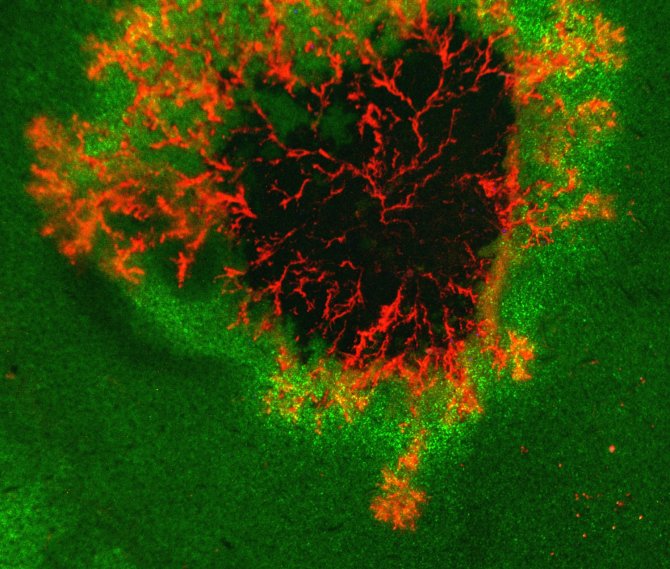All over the world, huge quantities of crop protection agents are sprayed to control potato blight (Phytophthora infestans). The mechanisms of resistance of potatoes need to be better understood to make growing this crop more sustainable. Researchers of Wageningen University & Research together with their colleagues in Tübingen and Norwich have now taken an important step. Their research has been published in the renowned scientific journal Science.
"There is a continuous 'arms race' between the potato plant andPhytophthora," says Vivianne Vleeshouwers, a plant scientist at Wageningen University & Research. The plant fiercely defends itself. An invasion of the "fungus" (actually an oomycete) immediately triggers a number of defence responses, such as making part of a leaf die off in a controlled manner to stop the advance of the disease. However,Phytophthorais able to repeatedly bypass these defences by means of mutating.
Recognising the disease
To defend itself the first thing the plant has to do is recognise the pathogen. "The plant has receptors for this, a kind of antennas. These bind tiny pieces of Phytophthora protein, which is the signal that something is wrong. This is when the defense responses kick in. So it is very important that the plant can actually detect the disease and has the right receptors in place to activate its defences", says Vleeshouwers.
These receptors are located either inside or on the outside of the cell. Receptorsinsidethe cell are encoded by specific R genes (R stands for resistance), and potato breeders take advantage of these. They develop resistant varieties by selecting for these R genes. However, the problem is that thePhytophthoramanages to break through that resistance, time and again.
"Much less is known about the receptors on the outside, on the cell surface, the PRR receptors. These receptors drive more general immune responses", Vleeshouwers says. Plant breeders are currently focusing their attention on R genes, but more fundamental research is required to be able to benefit from less specific defense responses by the PRR.
To this end, Wageningen University & Research is
cooperating with the University of Tübingen (Germany) and The Sainsbury
Laboratory in Norwich (UK).

PERU
Vleeshouwers: "We have been studying a specific type of PRR receptor called PERU. It binds a special piece ofPhytophthoraprotein, Pep-13, which triggers the potato plant to recognise the disease. It was generally assumed that PRR receptors hardly change over time (a well-known example is the very stable receptor that recognises bacteria flagella). But we found that PERU actually does exhibit dynamic evolution, and changes much faster than the more well-known PRR receptors. This is a totally new insight."
According to co-research leader Thorsten Nürnberger of the Centre for Plant Molecular Biology (ZMBP) at the University of Tübingen, the research results show that the evolution of immune receptors on the cell surface of plants (the PRR receptors) is much more complex than we previously thought. "There is not just one version of this receptor, but several variants that can recognise different binding molecules (the proteins of Phytophthora, ed.). This is a completely new finding."
Looking back in time
"Several wild potato species have variations of PERU. We have those plants in our collection and we can look back in time, as it were, to find out how they evolved", says Vleeshouwers. "Once you understand their evolution, you can look for ways to translate that into applications. By selecting for the right receptors, you can increase the plant's resistance to the disease."
By looking back in time, the researchers were able to trace the origins of the plant's evolution: the Andes. The receptor is called PERU, which stands for Pep-13 Receptor Unit. But of course, it also refers to the country of origin. Even better, the first author of the Science article, PhD student Yerisf Torres Ascurra, is herself from Peru.
Sustainable cultivation
This insight into this type of receptors (and more will undoubtedly follow) paves the way for the sustainable potato of the future. This plant will have specific resistance genes, as well as enhanced general defensive responses.
"Before today, breeders focused on R genes. However, the resistance they offer is constantly being thwarted. By studying how wild potato species survive in an environment where they are constantly assailed by diseases, we can discover what mechanisms they use, and then introduce these mechanisms in our own potato varieties", Vleeshouwers concludes.






